Kyrgyzstan # 3 – Kochkor – August 2014
Leaving our camp on Ysyk-Köl, where we wished we could have spent a month, the pressure of our exact date to enter China was not to be ignored. We had kept tabs on the progress of our Chinese Visa back in Bishkek and all was going well. We needed to hurry now, but we didn’t need to rush. It was a short detour up to the beautiful Karakol Valley National Park. Great camp sites were everywhere and even a clear creek babbling by. Unfortunately, Kyrgyz picnickers, like their Russian counterparts, leave their trash behind. We took the time to set up our MSR backpacking tent that would be used by our Chinese guide. Coincidently, the color was “green”, our guide’s working English name. She chose it because she was born on Earth Day.
Not knowing what conditions lay ahead nor how much time we would have on the road in China, we did a full lube and oil change on The Turtle V, including our Dual Amsoil Oil Filter System, www.amsoil.com. With the filters, we needed 15 quarts of Amsoil 15W/40 Synthetic Heavy-Duty Diesel & Marine motor oil which we took from the 14-gallon oil reserve tank built into the rear of the camper. Years ago, we realized that finding quality lubricants in third world countries could be a problem.
A phone call confirmed that our Chinese Visa was ready to be picked up so we headed back to the town of Karakol to buy a few more supplies and empty my oil drain pan—a plastic bag in a cardboard box—containing 15 quarts of used oil and two used oil filters. That turned out to be somewhat of a comedy. We did not speak Kyrgyz and only broken Russian. There were no recycle places in town. At length, we were directed to a small shop that sold oil. The owner talked about $5. We thought that he wanted to charge us $5 to recycle the oil. After some debate, it turned out that he wanted to pay $5 to buy the used oil. Mystery solved, we gave it to him with an Amsoil hat.
We headed for Bishkek with a smile on our face. The road was familiar and traffic was normal; horses, sheep and goats. We quickly found a relatively quiet parking place on a side street a few blocks from the visa office. Was it safe? Well, looking around at the Range Rovers, Mercedes and BMWs parked all day on the same street, we made a calculated guess.
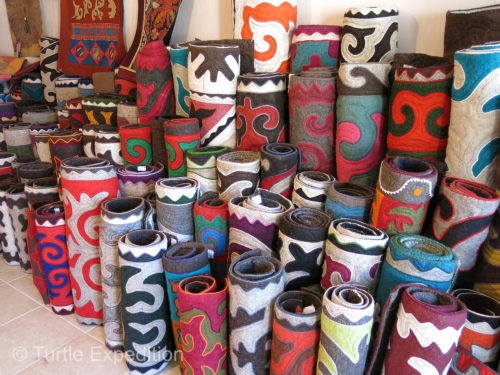
These beautiful felt carpets and hand-embroidered wall hangings are typically used in yurts but are also an attraction for tourists.
Back out of town with visa in hand, (YEAH!!!), we headed west again on A365 and took the turnoff onto A367 towards the historic Silk Road caravanserai, Tash Rabat and the Turugart Chinese border. At a junction, we stopped at the friendly village of Kochkor to visit their wonderful yet somewhat dated Regional Museum. The interesting displays gave us a good feeling about the traditional Kyrgyz way of life. One room contained a full-size yurt decorated as it might be used in the countryside. Nearby we also found the Altyn Kol Shop, (Golden Hands), a women’s co-operative showroom and shop selling beautiful handmade felt rugs called Shyrdak, (made from the fine wool the region is famous for), and hand embroidered tapestries traditionally hung in yurts. Proceeds of all sales go directly to the individual artists.
We still had a few days to explore this friendly country so we took the turn off to Song-Köl, at 3,016 meters, (9,895 feet), the second largest lake in Kyrgyzstan. As we climbed into the mountains, hay was being harvested, mostly by hand. The evidence of human labor was amazing.
- We wished we could have stayed a month at our peaceful camp on Ysyk-Köl lake.
- Kyrgyzstan 2014: At our camp above Lake Yssil-Kul, we were surrounded by Russian sage.
- Time for lunch and a cup of coffee while our wash dried in the sun.
- This nice older gentleman stopped by our camp just to say hello.
- He was curious where we came from.
- Kyrgyz elders are held in high esteem.
- Locals just go for a swim, picnic, and leave all their trash. It is really sad.
- Our only neighbors at our camp in the Karakol Valley National Park were sheep, goats and horses.
- I’m just having breakfast. Hope we’re not in your way.
- We were tempted to follow this track into the next valley, but it did not look like there was a place to turn around if it got too narrow.
- Our Amsoil Dual Filter System allows us to go thousands of miles further before changing our oil.
- The Turtle V camper has a 14-gallon oil reservoir. Quality oil can be hard to find in third world countries.
- Our Macs Trail D-Vise came in handy when a third hand was needed. It fits all of the trailer receivers on both front and rear bumpers.
- This practical tool called Macs Trail D-Vise is mounted at the rear bumper trailer hitch mount.
- Our light-weight two-man MSR tent was perfect for our Chinese guide. She would spend many nights in it on our way across China.
- Gary is testing our Chinese guide’s tent. Coincidentally, her chosen English name was Green.
- Just roughing it. Fresh bread with fresh cheese and some smoked oysters for an hors d’oeuvre.
- Monika whips up one of her delicious one-pot meals. Looks like chicken stew for dinner.
- The towering peaks of Kyrgyzstan make a beautiful silhouette for a sunset.
- It’s sad to see the garbage that Kyrgyz leave behind in such a beautiful place.
- Kyrgyz picnickers all seem to leave their garbage behind.
- We found quiet parking on a side street a few blocks from the visa office. Looking around at the Range Rovers, Mercedes and BMWs parked all day on the same street, we figured it was safe.
- When the highways were good, they were excellent, but many were also under construction.
- Road construction near the Chinese border.
- Horses everywhere in this country.
- We were impressed by the beautiful felt carpets called Shyrdak at the handicraft womens’ co-op in Kochkor.
- Quite a few of these hand embroidered traditional wall hangings used in yurts were antiques.
- Shyrdaks, the hand made felt carpets, are a tradition in Kyrgyzstan.
- Dinara, the manager of the Altyn Kol handicraft shop, a women’s co-operative, proudly displays a Shyrdak (felt carpet) with a traditional design.
- Shyrdak rugs came in all kinds of colors and sizes.
- Creative local women use the felting technique for many different applications.
- Hand embroidered wall hangings like these are often used in homes and yurts. They are made completely by hand.
- The intricate detail work was amazing.
- A row of old Lada Nivas date back to Russian occupation.
- The full-size display yurt in the main room of Kochkor Regional Museum gave us some idea how herding families live in the country, tending their flocks of sheep.
- The Regional Museum in Kochkor had some interesting artifacts from kitchen tools to grinders to riding saddles and horse packing saddles.
- Old musical instruments on display.
- We found this type of grinding wheel all over Central Asia.
- The rolling hills of this part of Kyrgyzstan reminded us of parts of Mongolia.
- There was little sign of mechanical harvesters. All grass was cut by hand with a scythe and hand loaded on the truck.



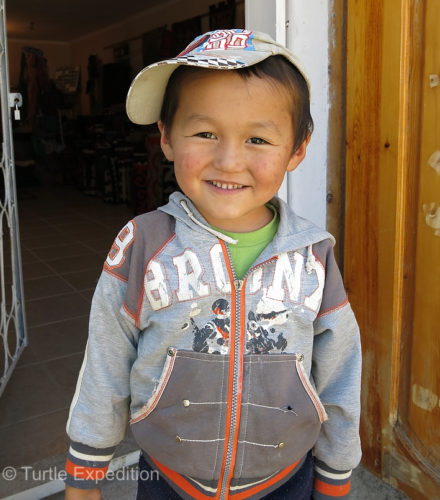
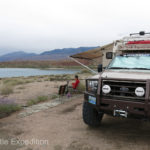
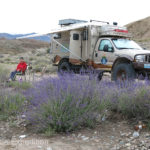
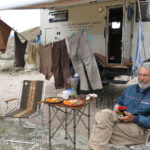
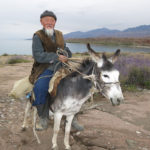
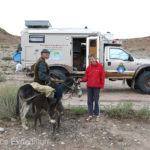
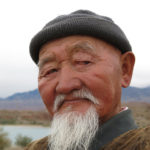
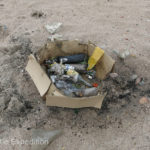
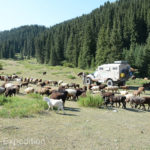
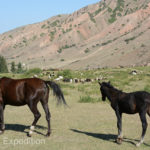
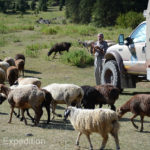
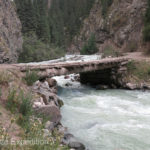
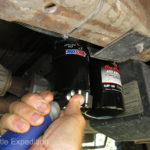
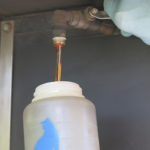
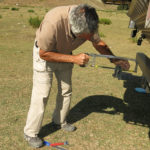
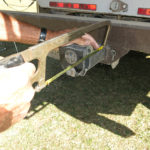
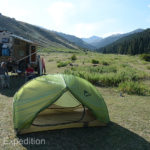
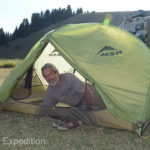
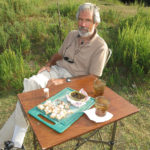
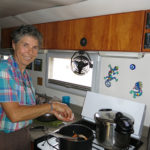
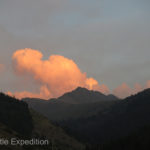
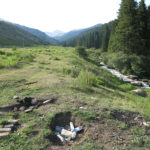
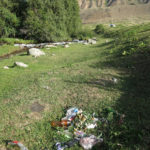
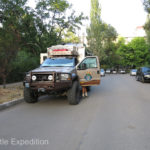
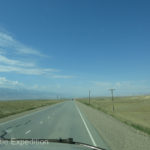
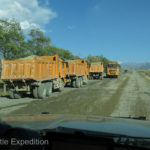
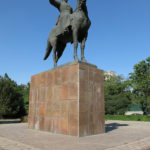
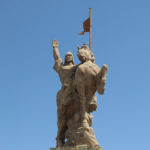
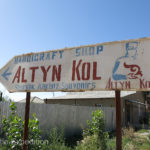
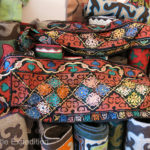
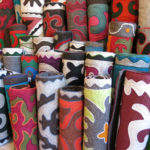
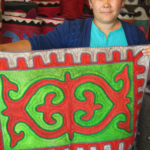
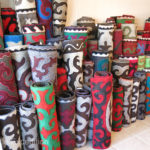
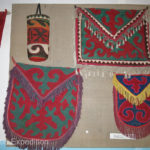
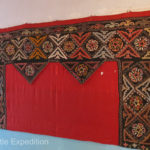
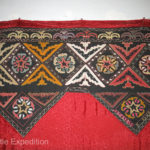
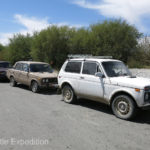
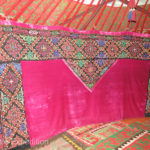
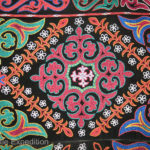
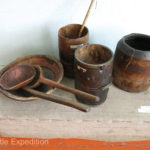
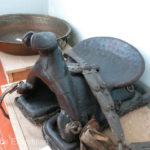
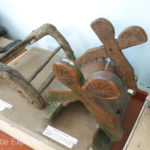
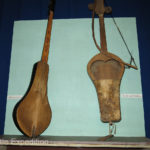
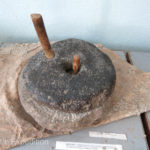
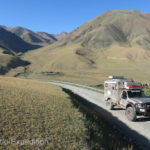
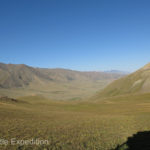
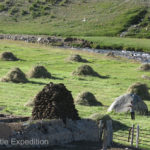
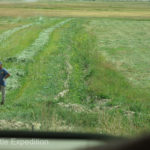
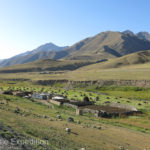
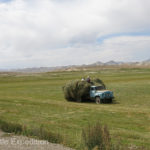





Leave a Comment